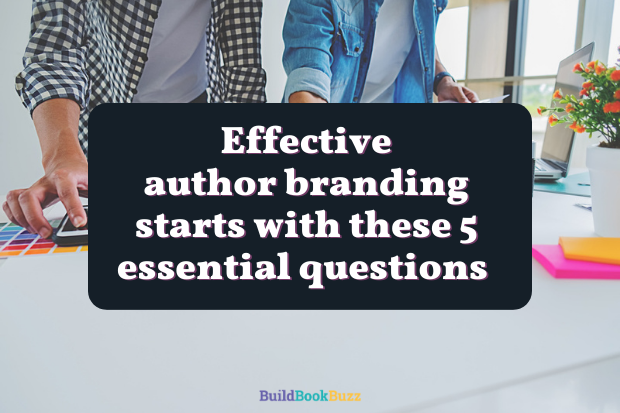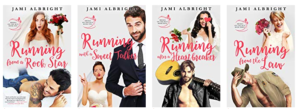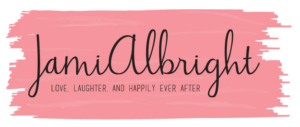Effective author branding starts with these 5 essential questions
How much do you know about author branding? Here are a few examples and five questions that will help you define your author brand.
What do you have in common with Google, Nike, and Samsung?
You’re all brands.
The American Marketing Association defines a brand as “a name, term, design, symbol or any other feature that identifies one seller’s goods or service as distinct from those of other sellers.”
Author brands
But aren’t your books the products – not you?
Yes and no.
In most cases, you’re the brand, while your books are “brand extensions.” They’re literally an extension of your brand onto additional products.
For example, remember when Coca-Cola was just, well, Coke? Now you can drink Coca-Cola Cherry, Orange Vanilla, Diet Coke, and more. Coke is the brand; the flavor varieties are brand extensions.
As an author, you might not be as well-known as that brown carbonated beverage, but you’re still a brand. In addition to books, your brand might also extend to online courses you’ve created, presentations you make, and even other products such as t-shirts and coffee mugs.
Book series as brands
With a book series, the titles in the collection are extensions of the series brand.
If you’ve authored several series, each series is its own brand. The books in each are extensions of their respective “parent” brands.
 The Dummies multi-author book series from publisher John Wiley & Sons, Inc., is a good example. The name “Dummies” is the brand – it even says so on the series logo. The many individual titles are brand extensions.
The Dummies multi-author book series from publisher John Wiley & Sons, Inc., is a good example. The name “Dummies” is the brand – it even says so on the series logo. The many individual titles are brand extensions.
What’s in a brand?
Your author brand is usually also your personal brand. It’s what people think of when they hear your name; it’s a collection of impressions people have of you. A number of elements help create those impressions, including your:
- Books — both what they look like and what’s in them
- Online interaction with readers and others
- Social media contributions
- Website
- In-person interactions with readers and others
- Personality
Your brand is who you are – not who you want to be or who you want readers to think you are. But it also goes beyond who you are to include what you stand for, how you handle and present yourself, and what you do.
Successful self-published romantic comedy writer Jami Albright is a good example of author branding carrying over to books. Her humorous “Brides on the Run” series reflects her personality – fun, funny, and smart.
What does author branding look like?
Your author brand is reflected in the imagery surrounding your book and its marketing materials.
Albright’s author branding for her “Brides on the Run” series is light, bright, and cheerful. The covers use a whimsical title font in a decidedly feminine color that pops on an almost-white background. And, there’s literally a smile on every cover.
We know from the branding alone, without reading any descriptions, that these books aren’t going to make us cry.
Jami’s website header uses a similar script font and a lighter shade of that pink in a background that resembles nail polish. Pretty girly, don’t you think? So is Jami. She is her brand.
Compare that with best-selling crime writer Michael Connelly’s site. Like his book covers (and what’s between them), the header is dark, intense, no-nonsense.
Defining your author brand
How do you determine your brand so you can translate it to the imagery that surrounds it? Working with a professional designer to create a unified look that goes with you across all platforms starts with answering these branding questions:
1. What am I known for, and is that an accurate reflection of who I am?
If it isn’t, what changes do you need to make? For example, you might see yourself as a relaxed and ramblin’ kind of guy, but your book covers and content come across as uptight and pedantic. Which is the real you?
2. How do others describe me?
Rather than guess at this, ask people who know you well how they describe you to others. Does their description match yours? Or is there a disconnect between their perception and yours?
3. What am I naturally good at? What do I do best?
Understanding what you do best and how (or if) you’re doing this now will help determine your brand’s “mood.” It will also help you see if you’ve strayed too far from the core you – and your brand really is your essence.
4. What differentiates me from my competition?
What’s unique about you or what you offer? How do you compare to others? They’re more X and you’re more Y, but what’s Y for you? Try to pin that down.
5. Am I a leader, a follower, or a helper?
You want to determine this because a leader’s brand looks and feels different from a follower’s or a helper’s. The brand for someone who’s an encourager should be quite different from that of someone described as “making the trains run on time” or “takes no prisoners.”
Invest time in your author branding
Identifying and developing your author brand is an important process that takes time and effort. Be thoughtful about it. Be patient. Work on it until it rings true not only with you, but with those who know you.
When you have that clarity, work with an experienced designer to bring it to life visually. You want a “look” – branding – that involves colors, fonts, and imagery you will use as the basis of your website design, book covers, social media profiles, and social media content.
When you’re done, you’ll have a unified public face that represents the real, true, you: Your brand.
How would you describe your author brand?
Like what you’re reading? Get it delivered to your inbox every week by subscribing to the free Build Book Buzz newsletter. You’ll also get my free “Top 5 Free Book Promotion Resources” cheat sheet immediately!





I consider myself “the supportive sister who cares” and try to get that message across in my series “The Sister’s Guides to Empowered Living.” Rather than the expert that delivers information, I prefer the image of a trustworthy sister/BFF who will guide and encourage the reader undergoing adverse life events.
This is a work in progress that needs ongoing refining.
I like that description a lot, Sonia. Have you thought about incorporating girlfriendy-stock photos? I don’t know if that would work — I’m just thinking that a few images of women together could help convey that.
Sandy
I’ve never considered myself as a brand. My Jim Stanton character is all the characteristics I wish I had wrapped up with a solid dose of never taking himself too seriously. That last part resonates with me, but I would not know where to start asking anyone other than my wife to “describe” me in 18 words or less (the perfect length of a lead sentence according to Ink on Paper, the best book ever for journalists.) This brand approach is going to take some serious thought…
There’s no need to limit that description to 18 words, David, because the exercise isn’t about writing the perfect lead. It has nothing to do with journalism. Is Stanton part of a series? Have you branded the series?
Sandy